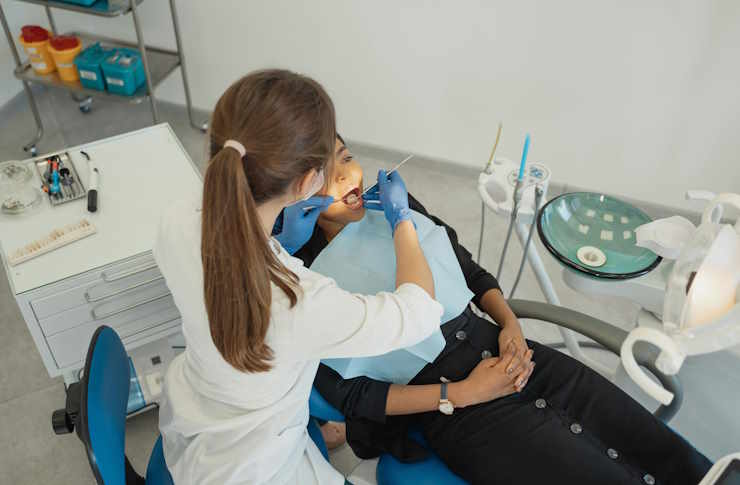Discover Screwless Implants for Effective Tooth Replacement
Screwless implant restorations offer an alternative to traditional screw-retained or cemented implant teeth. By using precision friction-fit connections, these solutions can simplify maintenance and support good oral hygiene—points that matter to many older adults. Here’s how they work, who might benefit, and what typical UK costs look like.

Screwless implant restorations are designed so the final tooth or bridge is held in place without visible fixation screws or permanent cement. Instead, they rely on precision-engineered, friction-fit connections that “lock” components together. For many people in the United Kingdom—particularly older adults—this approach can reduce day‑to‑day upkeep, avoid trapped cement, and make professional maintenance more straightforward. While the implant fixture itself is still placed in bone, the superstructure is attached without a retaining screw, which changes how the prosthesis is serviced and cleaned over time.
Affordable screwless implants
Affordability depends on several factors: the number of missing teeth, bone quality, the need for grafting, the specific implant system, and laboratory materials chosen for the crown or bridge. In the UK private sector, single-tooth restorations generally cost less than full-arch options, and removable overdentures tend to be more budget-friendly than fixed bridges. Payment plans and staged care are common in local services, and choosing a screwless retention method can sometimes lower maintenance visits associated with screw loosening or excess cement, though total costs still vary by case and clinic.
Screwless dental implants
“Screwless” in this context refers to how the prosthetic is retained, not to the implant’s shape. Two well-known approaches are conometric (friction-fit) and locking-taper connections. Conometric systems use precisely matched cones to create a stable, reversible friction lock between the abutment and the crown or bridge. Locking-taper designs use an ultra-accurate internal taper to secure the abutment, forming a tight seal without a retaining screw. Both aim to provide firm retention while allowing clinicians to remove the restoration when needed.
A potential advantage is simplified hygiene: without an access hole for a fixation screw or excess cement at the margin, there may be fewer places for plaque to accumulate. Many patients also value the clean appearance and the possibility of chairside retrieval for repairs or soft‑tissue checks. As with any implant solution, careful planning, high‑quality components, and regular professional maintenance are essential to long‑term function.
Implants for elderly patients
For older adults, candidacy is less about age and more about overall health. Well-controlled chronic conditions, such as diabetes or hypertension, can often be managed during implant treatment, while specific medications—especially certain osteoporosis therapies and blood thinners—require tailored planning. Where bone volume is limited, options may include short implants, narrow‑diameter implants, or grafting; your clinical team will balance surgical complexity against comfort and expected healing.
Healing generally takes several months, though some cases allow for immediate or early loading when stability is sufficient. Many seniors prefer minimally invasive techniques, local anaesthesia, and, when appropriate, light sedation. After fitting, consistent cleaning around the implant and regular reviews in your area help protect gum health and the restoration’s fit over time.
In the UK, private fees vary by region and case complexity. The examples below outline typical ranges for screwless prosthetic options. NHS funding for implants is not routinely available and is generally limited to specific clinical indications; most implant treatments are provided privately.
| Product/Service | Provider | Cost Estimation |
|---|---|---|
| Single conometric crown on an implant (e.g., Acuris) | Dentsply Sirona (via private UK clinics) | £2,200–£3,600 per tooth |
| Locking‑taper single implant and crown | Bicon Dental Implants (via certified UK clinics) | £2,500–£3,800 per tooth |
| Two‑implant overdenture with friction‑fit attachments (e.g., SynCone concept) | Dentsply Sirona (via private UK clinics) | £4,000–£7,000 per arch |
| Full‑arch fixed bridge using screwless retention (locking‑taper or conometric) | UK private clinics using compatible systems | £12,000–£20,000 per arch |
Prices, rates, or cost estimates mentioned in this article are based on the latest available information but may change over time. Independent research is advised before making financial decisions.
This article is for informational purposes only and should not be considered medical advice. Please consult a qualified healthcare professional for personalized guidance and treatment.
A screwless approach can be an effective way to restore function and appearance while prioritising maintenance and soft‑tissue care. With appropriate planning, seniors may benefit from streamlined hygiene, reversible professional servicing, and discreet aesthetics. Treatment choice ultimately depends on health status, anatomical factors, and preferences, making a thorough assessment and evidence‑based planning central to stable long‑term results.




